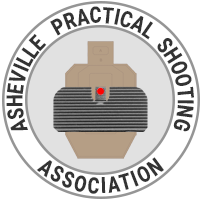Range Rules for Shooting Matches
“Everything we do revolves around safety”
- All USPSA rules are followed.
- Always keep muzzle pointed in a safe direction.
- USPSA events are strictly “cold range” (no loaded firearm) events, and that includes the parking area. All firearms entering the gun range shall be in a gun case or gun bag. Bagging and unbagging of firearms must be done in designated safe areas only. No ammunition may be handled in any safe area.
- Everyone must wear eye and ear protection from designated point when range is in active hot mode.
- Once on the range, your weapon must remained holstered at all times unless you are making ready to shoot and are instructed to load your weapon by the range safety officer.
- Watch your 180’s. There is an imaginary “180 degree” line that is the boundary between “uprange” (behind you, towards onlookers) and “downrange” (towards the targets). This line generally moves with you as you move through the course of fire. Pointing your weapon “uprange” of the 180 degree line is a serious safety violation and will result in match disqualification.
- Anytime you are moving and not actively engaging targets, your finger MUST be *visibly* outside of the trigger guard.
- When you are reloading, your finger MUST be *visibly* outside of the trigger guard.
- Alcohol and drug use is strictly prohibited on the range. Those found to be under the influence of alcohol or any drug be it prescription, over the counter or illegal will be asked to leave the range.
- All attendees of any match are expected to act in a sportsman like manner at all times.
- Disqualification Policy (DQ): All USPSA rules will be enforced. If a shooter incurs a DQ, that shooter will be finished shooting for the match/day, but you are welcome to join us again at our next match with lessons learned. Repetitive DQs, including unsportsmanlike conduct, will be handled on a case by case basis.
- Young shooters are welcome (under 18) when accompanied by an adult.
- New shooters please come and sign in at the barn and sign the waiver indemnifying us from blame if you shoot someone or yourself at the range, etc.
- We appreciate everyone’s help tearing down the stages and cleaning up!
USPSA rules can be found by clicking HERE.
What Else You Need to Know
to Shoot USPSA Practical Shooting Matches
adapted from the USPSA website:
We’re excited to see you and eager to answer your questions, but here are a few pointers to make your first visit a pleasant experience for everyone.
- You will need your own eye and ear protection. Your normal corrective lens or sunglasses will serve for your first visit. Inexpensive foam earplugs available at most sporting goods or hardware stores will suffice for hearing protection.
- Don’t assume you know more than you do. Use your first visit to concentrate on watching, listening, and learning.
Firearms and Holsters
It may be that the firearm you already own will be just what you need to get started in practical shooting, but you may learn of other competitive opportunities that will give you that excuse you’ve been looking for to buy a new toy! You can view the restrictions for holsters here (see Chapter 5, Competitor Equipment). In general, you will want a holster that has just a little retention and covers the trigger guard of your weapon.
Ammunition
For a USPSA Practical Shooting match, you’ll want to bring about 200 rounds of ammo, unless you are prone to miss a lot! We tell inexperienced shooters to bring about 250 rounds. For the Tuesday Funshoots, you only need about 50 rounds.
Competitive Shooting Divisions
USPSA has five competitive divisions (Limited Division, Limited 10 Division, Production Division, Revolver Division, Open Division, Single Stack Division) delineated by equipment rules. Unless you are blessed with more money than you need, we recommend that you don’t rush out and spend until you’ve had the opportunity to learn enough about the sport to make an informed decision. A great place to read about the different divisions, learn the lingo, learn about power factors and more is this web page (the good stuff is about half way down the page).
- Holsters must retain the firearm during any required movement, must cover the trigger of a holstered gun, must point to the ground when the firearm is holstered, and must be carried at belt level
- Shoulder holsters, fanny packs, et al, are not permissible at USPSA events.
- Further, the Production Division has additional holster restrictions. Go to the USPSA Rulebook, page 91, for more information about the equipment requirements of each division. (Also see the USPSA Handgun Rules)
Other Equipment Needed
- 4-6 Spare magazines or speed loaders and belt mounted carriers. During a matches you will fire a minimum of 12 rounds and sometimes as many as 35. Plus, you must allow for the limits of your shooting skills! You want to allow more rounds per match than what is actually called for to make sure you can finish your match (More inexperienced shooters may take 15-20 rounds to finish the Texas Star alone!). Magazines should be available from the gun manufacturer or from a variety of after market sources.
- Stiff shooting belt capable of holding magazine or speed loader holsters
- Belt mounted magazine/speed loader carriers for each magazine, depending on the divisions in which you choose to compete.
